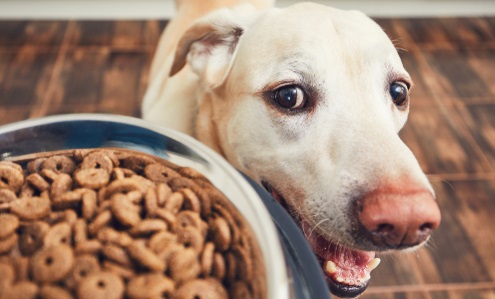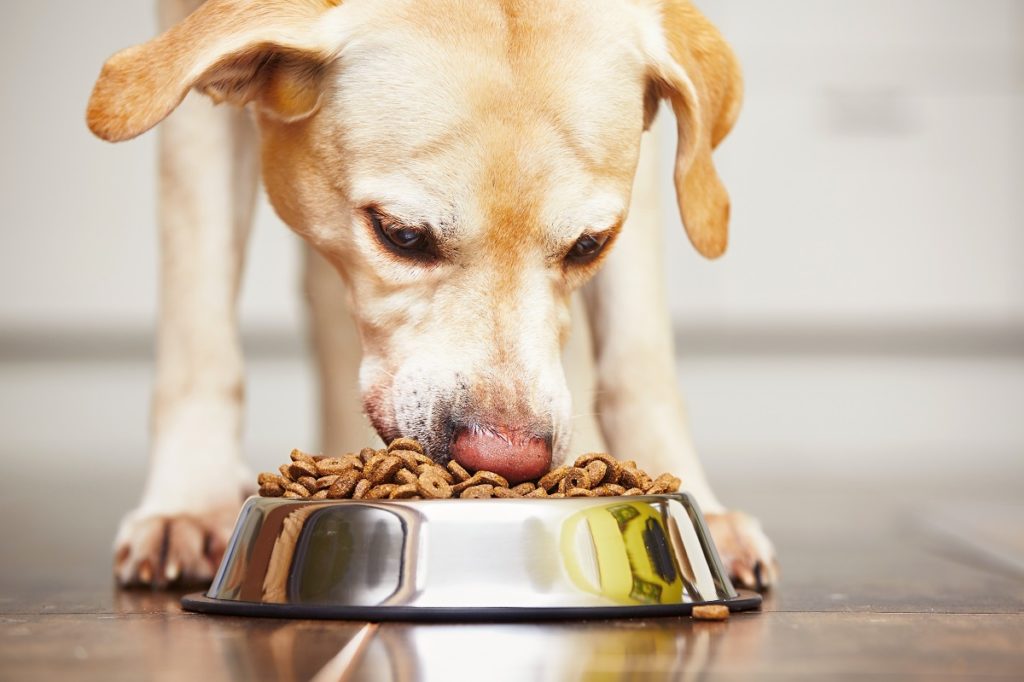Your dog plays with his food because he sees eating as a social activity. Dogs, by their nature, are pack animals, and eating is a significant part of their social-based biology. Every pack has a pecking order, and in the mind of your dog, every member of your family is part of that pecking order. For dogs, eating is part of a more meaningful ritual, and it is important to set guidelines and structure to ensure that the routine takes place under the policy you have constructed. If you have wondered, “Why does my dog play with his food?”, you are not alone. While it may be frustrating for you at first, it is an easy habit to break using a few easy guidelines.
Potential Causes
Canine anxiety is likely one of the most significant contributing factors to your dog playing with his food. Food and water are a dog’s most precious resources when it comes to survival. Anxiety about meals could be leading your dog to act out as a result. Make sure your dog has a set space in your house where meals take place. One of the best ways to combat this is to establish a regular daily routine for feeding, play, and walks.
Set Specific Meal Times
 If your dog plays with his food, then his food may be too readily available in your home. Some breeds do better with grazing throughout the day, but all dogs are different. Establishing a set mealtime, whether it is once or twice a day, is a good practice for reinforcing the ritual of mealtime that your dog inherently understands on a biological level.
If your dog plays with his food, then his food may be too readily available in your home. Some breeds do better with grazing throughout the day, but all dogs are different. Establishing a set mealtime, whether it is once or twice a day, is a good practice for reinforcing the ritual of mealtime that your dog inherently understands on a biological level.
Don’t Mix Food With Play
The first step in stopping your dog from playing with his food is to avoid daily treats that could be misconstrued as toys. Things like bully sticks, rawhide chews, pigs ears, any large and long-lasting treat that could become a toy should be avoided. Instead, introduce new toys that are not food. Rope and hard rubber toys are great options as they can’t be easily chewed up. It is best to avoid things like stuffed animals or rubber toys with food in them.
Play More
A lack of exercise and a need for greater stimulation could be contributing to your dog playing with his food. In the wild, dogs would hunt for their prey, a difficult process wherein they would exhaust their bodies and intellect to achieve their goal of securing their daily meal. Long walks or high-intensity playing are both great options for helping your dog get the physical exercise he needs. Also, both of the activities mentioned above require your dog to use a lot of brainpower. Whether it is focusing on new smells around your neighborhood, or paying attention to a new route you take him on, your dog is continuously observing, calculating, and remembering as you walk him. Similarly, chasing a ball may seem like fun and games, but it is simulating the chase that your dog would have engaged in if he were tracking down his dinner.
Spend More Quality Time Together
Your dog could be playing with his food because he feels he is the leader of the pack and is allowed to make his own rules. Reestablish the group pecking order by spending more time with your dog. Physical and social interaction with your pup will help alleviate any anxiety they have about being left at home alone or not feeling part of the group. This time should be different than play time. Giving your dog your undivided attention will help create a bond that establishes respect. An increased dose in physical affection tells your dog that you are their protector and they will be more willing to follow your direction moving forward. Especially when you are looking to change behavior, it is essential to increase levels of care and affection so that any other actions you take aren’t misconstrued as malicious from your dog’s perspective.
 Every dog has a different set of healthy behaviors, and especially in regards to meals, every dog is different. However, there are certain biological truths about the way canines view mealtime that can help you break your dog’s habit of playing with his food. Remember to set a pattern with specific meal times at a particular place, increase play and affection, and make sure to establish the separation between toys and treats. These steps will help you to get your dog back into a regular mealtime routine.
Every dog has a different set of healthy behaviors, and especially in regards to meals, every dog is different. However, there are certain biological truths about the way canines view mealtime that can help you break your dog’s habit of playing with his food. Remember to set a pattern with specific meal times at a particular place, increase play and affection, and make sure to establish the separation between toys and treats. These steps will help you to get your dog back into a regular mealtime routine.
Sources:
- “Why Do Dogs Play With Their Food Before Eating – Wag!” WagWalking, 25 Feb. 2018, wagwalking.com/behavior/why-do-dogs-play-with-their-food-before-eating.
- “Why Do Dogs Toss Their Food Around – Wag!” WagWalking, 20 Mar. 2018, wagwalking.com/behavior/why-do-dogs-toss-their-food-around.
- “Why Does My Dog Like to Play With Her Food?” Why Does My Dog Like to Play With Her Food? | Dog Care – Daily Puppy, dogcare.dailypuppy.com/dog-like-play-her-food-6563.html.




